As we reflect on the insights shared during the ‘Snowday’ event on November 1st and 2nd, a cascade of exciting revelations about the future of Snowflake awaits us.
This article dives into the noteworthy data science features unveiled during the event, shedding light on the innovation and advancements that took center stage.
Join us on this journey as we unravel the highlights from Snowdays, with a specific focus on the latest in data science features, such as:
Snowflake Cortex Highlights
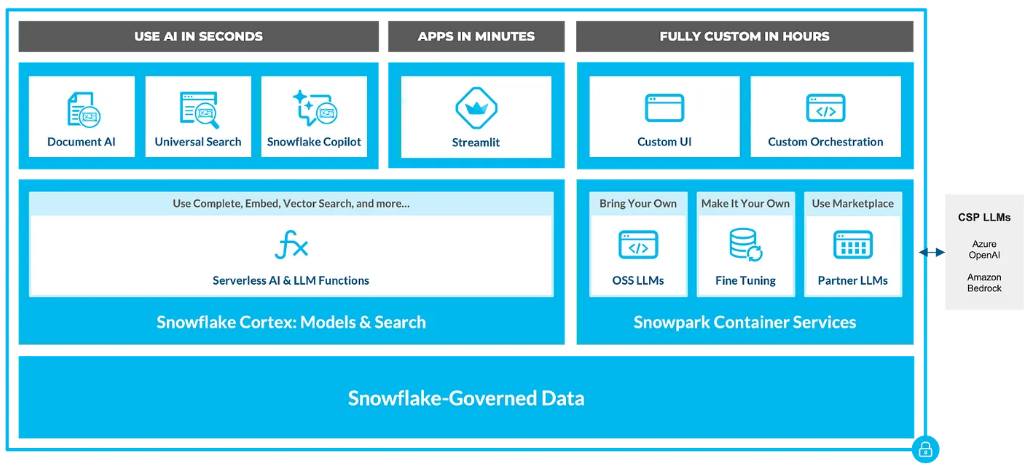
An overview of GenAI and LLM capabilities in Snowflake
Language Model (LLM) capabilities (some models are public while others are still in private preview)
LLMs are a new type of AI model that can generate text, translate languages, write different kinds of creative content, and answer your questions in an informative way. Snowflake’s new LLM capabilities make it one of the first cloud data platforms to offer users access to this powerful new technology.
This differentiates Snowflake from other cloud data platforms because it gives Snowflake users a significant advantage in terms of developing AI applications. With Snowflake Cortex, users can now easily build AI applications that can perform a wide range of tasks, such as generating reports, identifying fraud, and predicting customer behavior.
Here are some specific use cases for Snowflake’s LLM capabilities:
Advanced search features (in private preview)
Snowflake’s new advanced search features make it easier than ever for users to find the data they need, regardless of where it is stored. This is a major advantage over other cloud data platforms, which typically have more limited search capabilities.
Specifically, Snowflake’s new search features allow users to:
These advanced search features can help users to save time and be more productive when working with data. For example, a data analyst could use the new search features to quickly find all of the data that is relevant to a specific analysis project. Or, a business user could use the new search features to find all of the data that is related to a specific customer or product.
Not to mention that the use of the different snowflake filters provided by these search features (column naming, tagging, metadata specification) induces an increase in data consistency.
In conclusion, it’s worth noting that this addresses a key aspect of data catalogs. Given the inherent challenges in implementing a data catalog, leveraging this Snowflake integrated feature becomes particularly compelling.
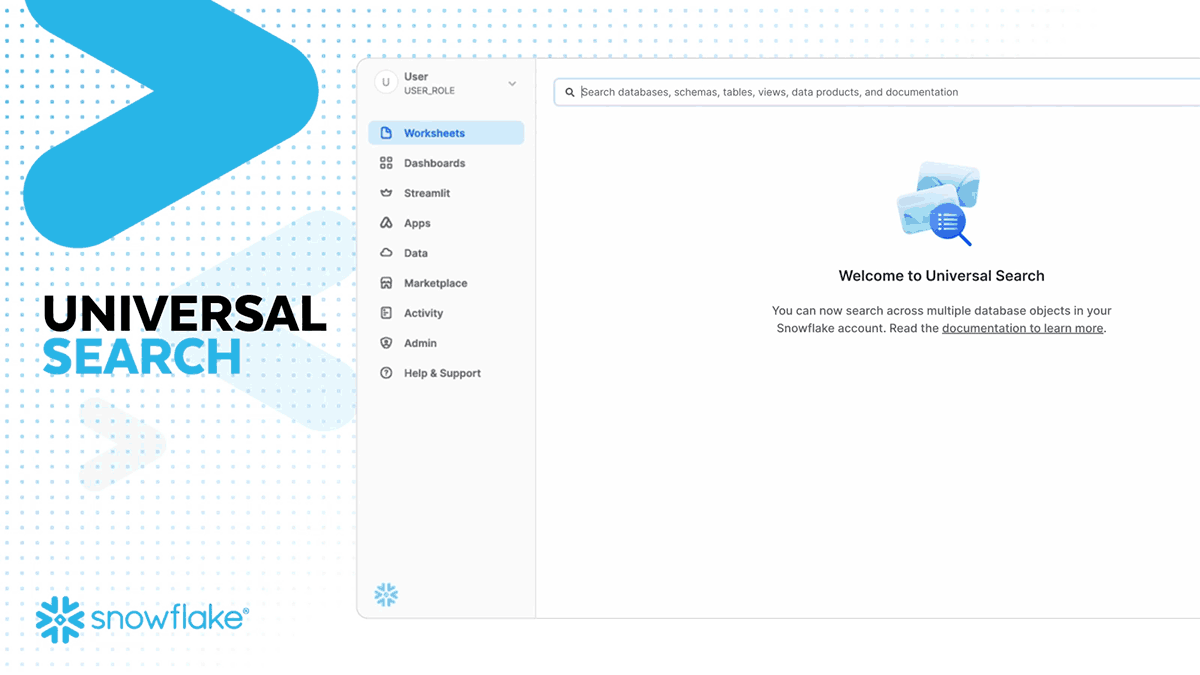
SQL commands for sentiment analysis and summarization (in private preview)
Snowflake’s new SQL commands for sentiment analysis and summarization make it easy for users to extract insights from their data without having to learn any new tools or languages. This is a major advantage over other cloud data platforms, which typically require users to use separate tools for these tasks.
Specifically, Snowflake’s new SQL commands allow users to:
These new SQL commands can help users to save time and be more productive when working with data. For example, a business user could use the new SQL commands to quickly analyze the sentiment of customer reviews or to summarize a long and complex report.
Snowflake Copilot (in private preview)
It is an LLM-powered assistant to generate and refine SQL with natural language. In addition, this text-to-code functionality will be coming soon programmatically via a general purpose function, Text2SQL, with Snowflake Cortex.
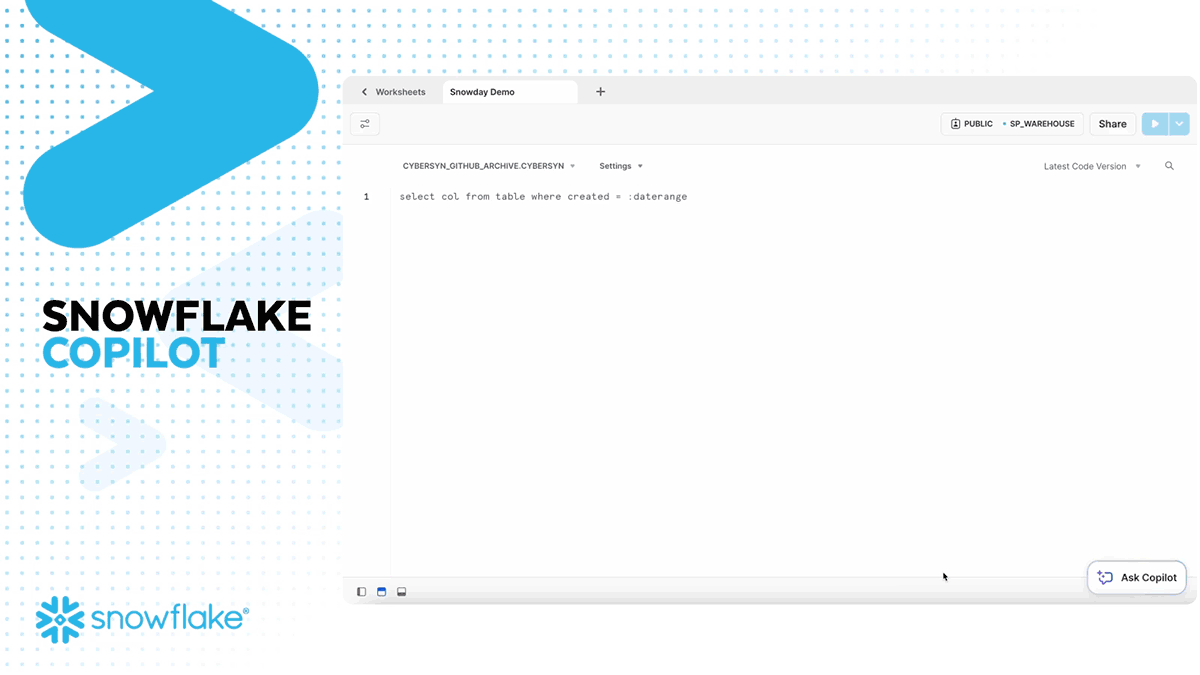
Document Data Extraction with Document AI (in private preview)
Snowflake Cortex’s Document AI, powered by LLM allows efficient extraction of data from various document types (pdf, word, txt, screenshots), saving time and resources in manual data processing.
Overall, Snowflake’s new features are very impressive and have the potential to revolutionize the way that people use cloud data platforms.
Snowflake is clearly differentiating itself from the competition by offering innovative features that make it easier for users to develop and deploy AI applications, find data, manage ML features, and share ML models. Snowflake is also making it easier for users to extract insights from their data without having to learn any new tools or languages.
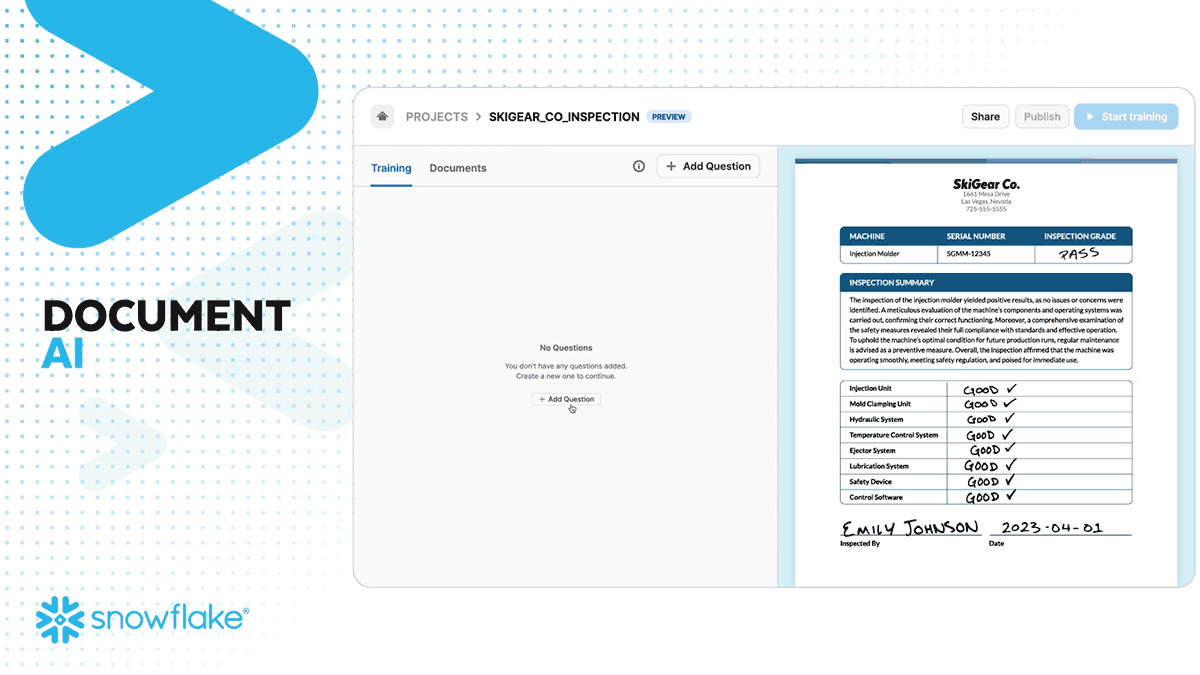
Feature store (in private preview)
A feature store is a central repository for managing and sharing machine learning features. Snowflake’s new feature store makes it easier for users to develop and deploy ML models.
This differentiates Snowflake from other cloud data platforms because it provides users with a single place to manage all of their ML features. This can help users to save time and improve the efficiency of their ML development process.
Here are some specific use cases for Snowflake’s feature store:
Model sharing
Snowflake’s ability to share ML models is also a major differentiator. This will make it easier for people to collaborate on ML projects and democratize access to ML.
Specifically, Snowflake allows users to share ML models with others, both within and outside of their organization. This can help to accelerate the development and adoption of ML applications.
Here are some specific use cases for Snowflake’s model sharing capability:
Snowflake Notebooks (in private preview)
Snowflake Notebooks, a cloud-based environment specifically designed for code development and execution, share similarities with notebooks that have been available for several years on other cloud data platforms. Databricks was the pioneer in this field, and BigQuery followed suit with its announcement on August 31. These Notebooks are thoughtfully designed to optimize performance within the Snowflake ecosystem.
Snowflake Notebooks offer a number of advantages over traditional IDEs, such as:
Snowflake Notebooks are currently in beta, but they are expected to be released to the general public in the near future.
What differentiates Snowflake as a Machine Learning development environment from others is the fact that it consists of Python APIs accessible through the Snowpark ML library, and SQL interfaces for defining, managing, and retrieving features, along with managed infrastructure for feature metadata management and continuous feature processing. This eliminates the need for specialized AI expertise. Moreover, the Feature Store and the Model sharing features empower Snowflake to catch up more effectively with their competitors, specifically Databricks, which obviously had the upper hand in the last couple of years due its integration with ML Flow.
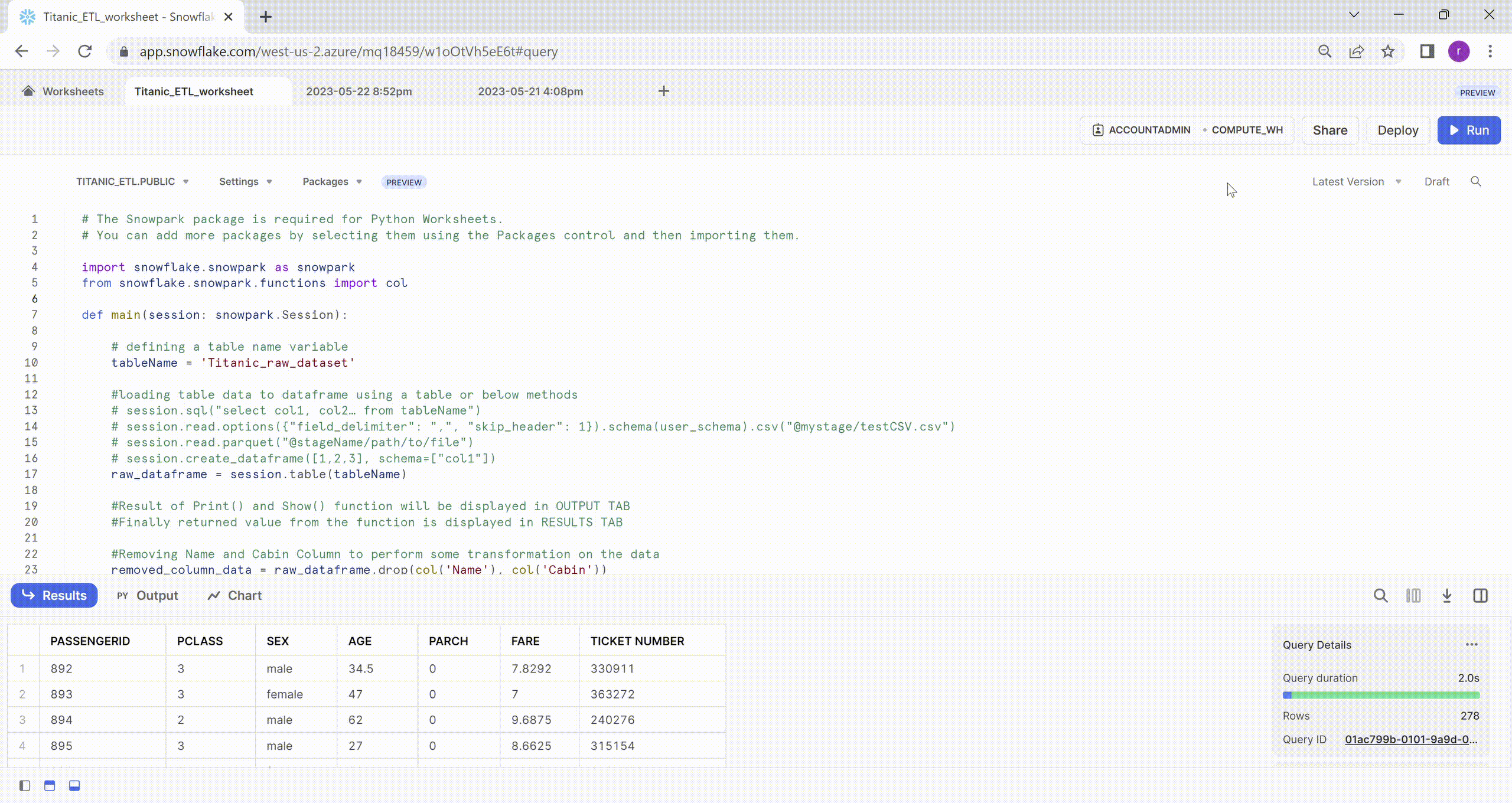
Conclusion
Snowflake’s unveiling of new features, including Snowflake Cortex, Copilot, Document AI and notebooks, affirms the company’s commitment to innovation. While the data science announcements align with the current GenAI trends, it is imperative to approach them with caution. It is noteworthy that certain features, though announced long ago, are still pending universal availability across all environments. Finally, let’s approach these innovations with open minds and a cautious optimism, ready to embrace the possibilities while staying grounded in reality.

 BLOG
BLOG






